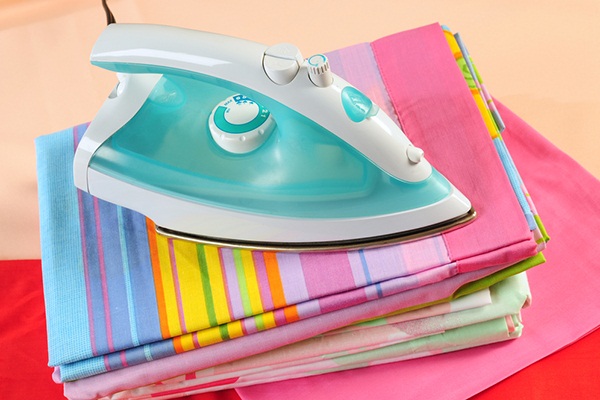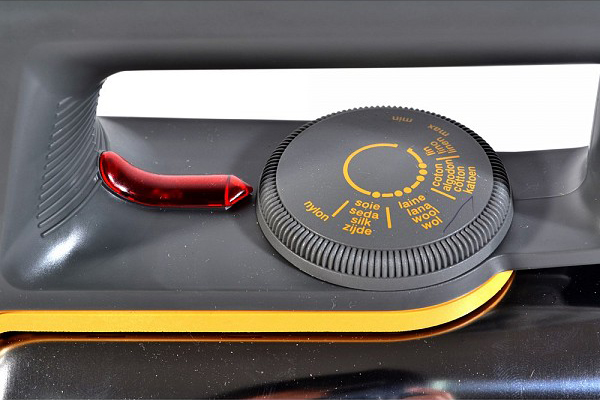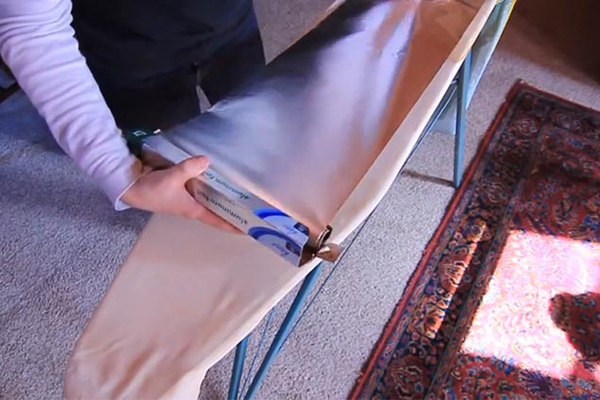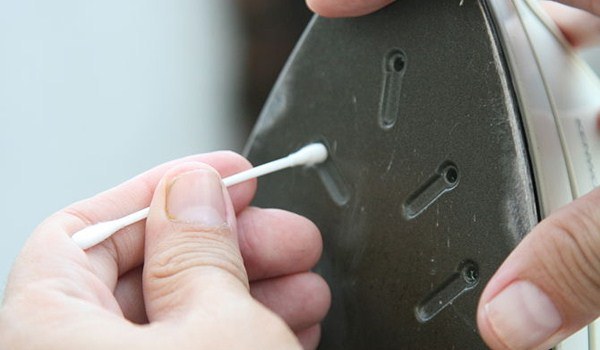Increase Ironing Efficiency and Lower Electricity Usage
 Classification of clothes before ironing
Classification of clothes before ironing
Before ironing clothes, it is important to classify them according to their fabric types, such as silk, wool, and cotton. This is because each fabric type requires a different ironing temperature. Additionally, small items like face towels and bowties should be placed in a separate group for convenience.
From Low to High Heat: How Iron is Used
When ironing clothes, it is important to avoid sudden increases in temperature. Instead, it is recommended to iron clothes in groups, sorting them in order from those that require low temperature to those that require high temperature. This approach helps to prevent damage to the product and minimizes energy waste.
To ensure optimal ironing results, it is recommended to follow a specific order when ironing different types of fabrics. Begin by ironing Nylon clothes, followed by shiny fabric, silk fabric, wool, and flannel fabric. For smaller garments, it is advisable to unplug the power cord and utilize the residual heat on the ironing board surface. By adhering to this order and technique, you can achieve a professional and effective ironing outcome.
How to Determine the Appropriate Iron Heat Setting for Different Fabrics

Ironing table with preset temperature for each fabric
It is important to use the correct temperature when ironing clothes in order to save energy and prevent damage. Using a temperature that is too high can waste energy and cause clothing to burn, while using a low temperature can be less efficient and consume more energy. To iron clothes effectively and efficiently, it is necessary to use the appropriate temperature for each fabric. Here is a guide to the standard temperature levels for different types of fabrics:
|
Fabric Type |
|
|
Linen Fabric |
The temperature is 240 ℃ |
|
Cotton Fabricis a versatile material that is popular for its softness, breathability, and durability. It is made from the fibers of the cotton plant and is used to make a wide range of products including clothing, bedding, and towels. is known for its ability to absorb moisture and provide comfort in both warm and cool temperatures. It is also easy to care for and can be machine washed and dried. With its natural and sustainable qualities, cotton fabric is a popular choice for those who prefer environmentally-friendly materials.
|
204 degrees Celsius / 400 degrees Fahrenheit |
|
This fabric is made from a blend of viscose and synthetic silk. It is a versatile and lightweight material that is perfect for a variety of applications. The blend of viscose and synthetic silk gives the fabric a soft and silky feel, while also adding durability and strength. This fabric is ideal for garments such as dresses, blouses, and skirts, as well as for home decor projects like curtains and pillow covers. With its luxurious look and feel, this viscose/synthetic silk fabric is sure to elevate any project. |
The temperature is set at . |
|
is a versatile natural fiber that is obtained from the fleece of sheep. It is known for its warmth, softness, and durability. is used to make various products including clothing, blankets, and carpets. It is also a popular choice for outdoor wear due to its ability to insulate and regulate body temperature. can be woven or knitted into different textures and patterns, making it a versatile material for both fashion and function. In addition to its practical uses, wool is also sustainable and eco-friendly. Sheep are a renewable resource and their fleece can be harvested annually without causing harm to the animals. Furthermore, wool is biodegradable and produces less waste compared to synthetic fibers. Its natural properties also make it resistant to fire and odor, making it a safe and hygienic option. Overall, wool is a valuable and timeless material that continues to be used and appreciated for its qualities. Whether it’s for warmth, style, or sustainability, wool is a versatile choice that offers many benefits. |
The temperature is currently . |
|
is a synthetic fabric that is known for its durability and wrinkle resistance. It is commonly used in clothing, upholstery, and household items. One of the advantages of polyester is that it is easy to care for and can be machine washed and dried. It is also resistant to stretching and shrinking, making it a popular choice for garments that need to maintain their shape. However, polyester does have some drawbacks. It is not a breathable fabric, so it can feel hot and uncomfortable in warm weather. It is also prone to static cling and can accumulate static electricity. Despite its drawbacks, polyester is a versatile fabric that is used in a wide range of products. It is often blended with other fabrics, such as cotton or wool, to combine its durability with the natural fibers’ comfort and breathability. |
Temperature: |
|
is a luxurious fabric with a smooth and shiny appearance. It is made from the fibers of the silkworm cocoon and is known for its softness and elegance. has been highly valued for centuries and is often associated with wealth and luxury. It has been used to create beautiful garments, bedding, and accessories. There are different types of silk, including mulberry silk, which is the most common and highest quality, and wild silk, which is produced by silkworms in the wild. In addition to its aesthetic appeal, silk also has functional properties. It is a natural breathable fabric that helps regulate body temperature and can be worn in both warm and cool climates. When caring for silk, it is important to follow the manufacturer’s instructions. is a delicate fabric that should be hand washed or dry cleaned to maintain its quality and longevity. Overall, silk is a timeless and luxurious fabric that adds elegance and sophistication to any setting. Whether used in clothing, home decor, or accessories, silk is a versatile and beautiful choice.
|
148 degrees Celsius / 300 degrees Fahrenheit |
|
is a synthetic fiber made from a polymer called acrylonitrile. It is known for its excellent durability, softness, and resistance to wrinkling, stretching, and shrinking. s are also resistant to sunlight and various chemicals, making them suitable for use in outdoor products. With their lightweight and insulating properties, acrylic fibers are commonly used in clothing, such as sweaters, socks, and winter accessories. They are also used in upholstery, blankets, carpets, and industrial applications. Overall, acrylic fiber offers versatile properties that make it a popular choice in various industries. |
|
|
Our product is made from high-quality shiny fabric, specifically nylon. |
135 degrees Celsius |
Recommended ironing temperature for different types of fabric
There are several ironing tables available with convenient preset temperature settings for different fabric types. With these tables, you can simply turn the control knob to the desired fabric without having to memorize specific temperature settings.
Don’t Iron Clothes When They’re Damp
To ensure optimal efficiency and energy conservation, it is best to allow clothes to fully air dry before proceeding to ironing. During this process, the natural evaporation of water will prevent unnecessary electricity consumption. That said, in case of particularly stubborn wrinkles, a judicious application of warm water can be employed to avoid repeatedly ironing the same area.
Position a Foil Liner Underneath an Oven Tray

Place silver paper underneath clothes
The use of silver or aluminum paper has a practical benefit of heat retention. By placing silver paper underneath clothes and then ironing them, the heat generated is amplified, resulting in reduced electricity consumption by up to 50%.
Shut Down Fans and Cooling Appliances to Improve Sleep Quality
To optimize the efficiency of ironing, it is important to consider the heat emitted from the ironing table. In low-temperature environments, the ironing table may need to generate more heat, leading to increased energy waste. As such, it is recommended to avoid ironing outdoors or in windy areas. Additionally, turning off cooling devices such as fans and air conditioning while ironing can further enhance the ironing efficiency.
Minimize Turning On and Off Habits
Saving Electricity with Proper Ironing Table Usage
When it comes to saving electricity, some individuals may believe that turning off the ironing table immediately after ironing one article of clothing and then turning it on again for the next garment is the most efficient approach. However, this common misconception actually yields the opposite result. In reality, repeatedly powering on and off the ironing table requires a significant amount of electricity to reheat the device each time. As a result, this practice consumes more energy than simply leaving the ironing table on for a brief period between items. By following proper ironing table usage, individuals can effectively minimize their electricity consumption while still accomplishing their ironing tasks.
There are modern ironing tables available now that feature an energy-saving mechanism. These tables automatically power off once they reach the standard temperature and subsequently power back on once the temperature drops below the set level. This highly efficient design effectively minimizes energy consumption during ironing tasks.
Properly Cleaning the Ironing Table Surface

Clean the surface of the ironing table
To ensure optimal heat transfer and efficient electricity consumption, it is important to maintain a clean and smooth surface on your ironing table. Regularly wipe the surface with a soft cloth, taking care to avoid scratching it. If any signs of rust appear, be sure to clean the surface immediately.



































